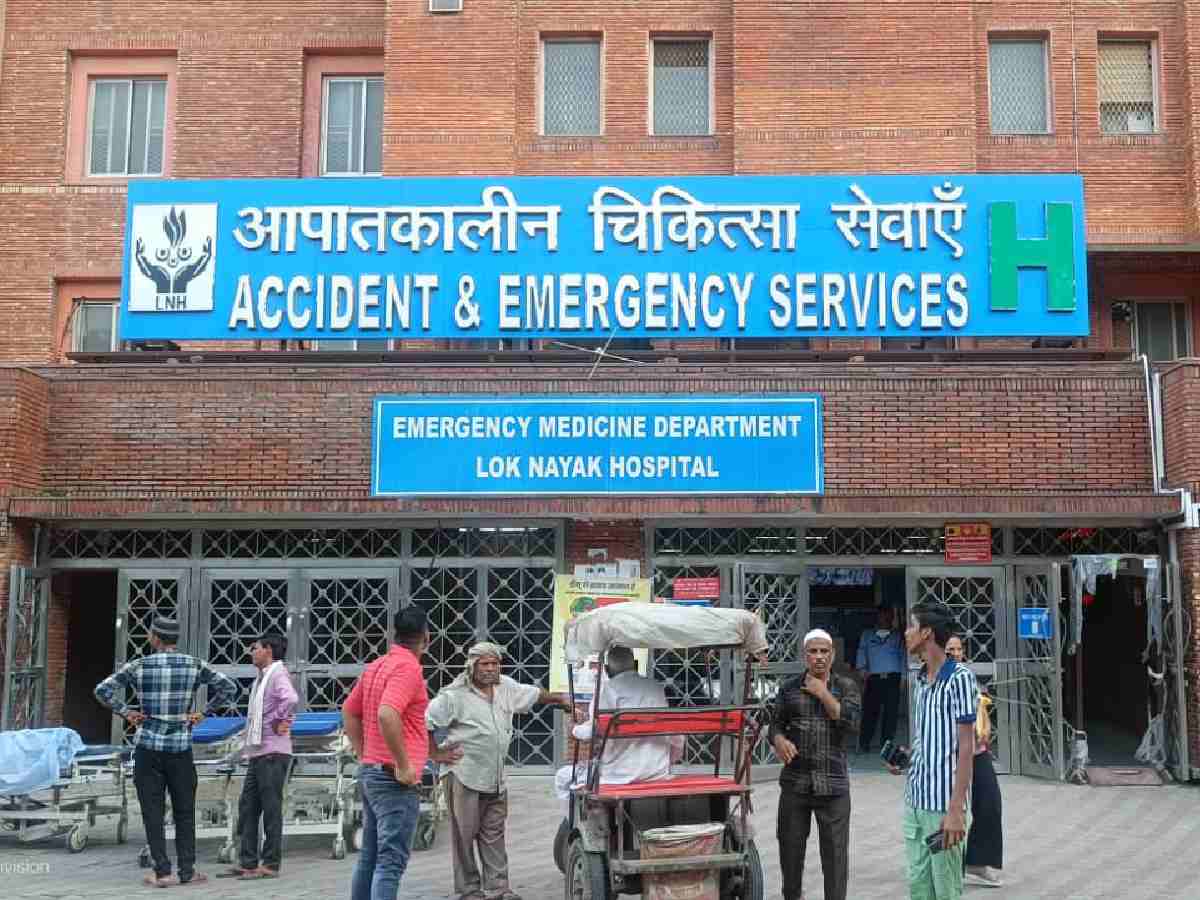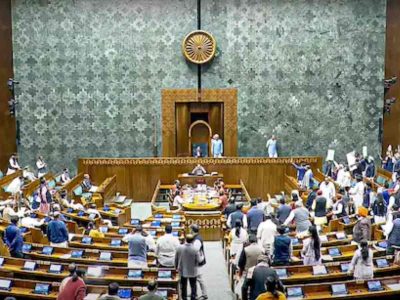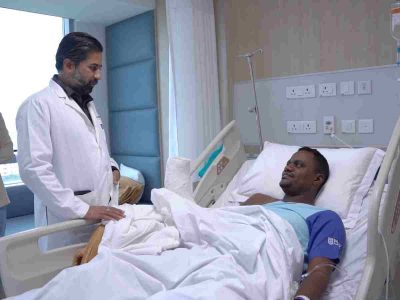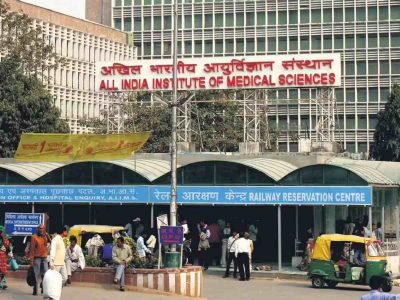Despite being hailed as the backbone of India’s public healthcare system, resident doctors working at premier government hospitals in Delhi — including the All India Institute of Medical Sciences (AIIMS), Dr Ram Manohar Lohia (RML), Lok Nayak (LNJP), Guru Teg Bahadur (GTB), and Deen Dayal Upadhyay (DDU) — are grappling with deteriorating infrastructure, a lack of basic amenities, and exhausting work hours.
From overcrowded Doctor Duty Rooms (DDRs) without clean toilets or bedsheets to safety lapses and erratic medicine supply, the very professionals keeping the system afloat are being pushed to the brink.
While patient footfall continues to soar — AIIMS alone caters to over 10,000 patients a day — the conditions for those treating them remain alarmingly poor, raising serious questions about the priorities of hospital administrations and the government’s commitment to frontline healthcare workers.
Dr Ram Manohar Lohia Hospital
Dr Ram Manohar Lohia (RML) Hospital in New Delhi, a premier central government tertiary-care and teaching facility affiliated with ABVIMS, currently has around 1,532 beds and handles an enormous daily outpatient footfall of approximately 7,000–8,000 patients, in addition to over 1,000 emergency cases each day. Over the course of a year, it serves more than 1.2 million outpatients and admits roughly 46,000 inpatients, with some 150,000 emergency visits annually — cementing its reputation as one of the nation’s busiest and most essential public healthcare institutions.
However, the resident doctors behind the hospital’s glowing reputation are facing serious hardships in their day-to-day duties due to inadequate DDRs and poor safety measures on the premises.
Members of the Resident Doctors’ Association (RDA), RML, said the doctors are working tirelessly around the clock to ensure they provide the best possible treatment, but despite their 24–36 hour shifts, they do not even have access to dedicated DDRs where they can rest.
“The hospital lacks the basic infrastructure; no clean toilets are available for the doctors, and female doctors face the most difficulties, as sometimes they work for 12 hours straight without access to clean and hygienic washroom facilities within the department. Apart from this, most of the departments lack dedicated female DDRs,” they said.
The RDA members added that they are not unwilling to work long hours, but the hospital must ensure a healthy working environment to improve productivity.
Regarding security, they noted that a special task force was set up a year ago but was active for only a few days. “The hospital premises are still not safe for doctors. Most areas, including the hostels, do not have CCTV cameras.”
They also claimed the number of security guards remains inadequate. The Department of Psychology, for instance, does not have a single guard for doctors’ safety, and metal detectors are yet to be installed at the emergency entrances.
“The hospital still has some dark spots and sensitive areas, including the passage between the Neuro, Ortho, and Trauma buildings to the blood donation department. Even lights are not installed, and the passage remains pitch dark at night — a potential flashpoint for a major incident,” the RDA members concluded.
Responding to the matter, a senior hospital official claimed that enough DDRs were available on the premises to cater to resident doctors.
“Currently, construction is underway, so the hospital has temporarily shifted some departments. Once the new building is complete, all departments will have adequate DDRs and other facilities,” the official said.
He also denied the allegations regarding dark zones on campus, stating that “there is appropriate lighting at every nook and corner of the hospital”.
All India Institute of Medical Sciences
The All India Institute of Medical Sciences (AIIMS), Delhi, is India’s foremost public healthcare institution, known for world-class treatment, medical education, and research. Established in 1956, AIIMS Delhi has a bed capacity of over 2,500 and handles an average daily footfall of more than 10,000 patients, making it one of the busiest hospitals in the country.
Yet, despite its prestige, resident doctors at AIIMS are struggling with a fundamental issue — accommodation.
Dr Vinay Anees, former president of the Resident Doctors’ Association (RDA), AIIMS, said the nature of healthcare means that doctors cannot restrict themselves to eight-hour shifts. “It is not ethical to abandon patients in need. So an eight-hour shift is not possible, but the shift shouldn’t extend to 24 hours either,” he explained.
However, the more pressing issue, according to Anees, is the lack of hostel facilities. “There are not enough hostels on campus. Doctors coming from other states to work at India’s biggest hospital are forced to find accommodation in nearby areas like Gautam Nagar. This has been a persistent issue. Despite writing letters to the Ministry of Health and even receiving approvals, no progress is visible on the ground,” he said.
Anees, however, appreciated the hospital’s safety and security arrangements, noting that AIIMS offers a secure environment for doctors to perform their duties.
AIIMS declined to officially respond to the matter.
Lok Nayak Hospital
Lok Nayak Hospital (LNJP), the largest Delhi government-run medical facility, may boast over 1,597 commissioned beds and a broad array of specialties, but the infrastructure meant for resident doctors reveals a story of neglect and administrative apathy.
The hospital houses 45 DDRs — one for each ward — to serve doctors working punishing 48-hour shifts. While those near Operation Theatres (OTs) are reportedly well-maintained with centralised air conditioning, the DDRs in general wards are in a state of disrepair.
A visit by Patriot revealed troubling conditions: walls stained with tobacco, leaking water coolers, unclean washrooms, and mattresses without bedsheets. These spaces, meant to provide brief relief, are deteriorating.
Of particular concern is the lack of gender-specific DDRs, making it difficult for female doctors to change uniforms. Additionally, many air conditioning units are non-functional or poorly maintained.
More dangerously, the Casualty DDR — located on the ground floor of the Accident and Emergency Department — houses an oxygen panel situated right next to an electrical panel. Experts warn that this setup could cause a fire in the event of a short circuit. Two official complaints have been submitted, but no action has been taken.
A resident doctor, speaking anonymously, said, “We don’t work by the clock. Our priority is the patient, especially since most cannot afford private healthcare. But all we ask for is a basic working environment. A DDR is not a luxury—it’s a necessity.”
The doctor added that even a small improvement in rest facilities could enhance patient care outcomes, especially when dealing with overcrowded wards and understaffing.
In response, hospital administration sources alleged that the poor condition of the rooms was due to the junior doctors not maintaining cleanliness. “The senior residents’ rooms are always clean,” one official claimed. “However, LNJP is committed to improving conditions for all doctors and will address complaints on priority.”
GTB Hospital
Guru Teg Bahadur (GTB) Hospital in East Delhi, with a capacity of 1,700 beds, is facing sharp criticism — not for its healthcare, but for the poor condition of its DDRs. Though the hospital has over 40 DDRs, the rooms meant for doctors to rest in are in a deplorable state.
Peeling paint, poor ventilation, and filthy washrooms plague these rooms. Many lack basic infrastructure, such as water coolers and functioning air conditioners. Broken chairs and old, uncovered mattresses add to the discomfort. The foul smell from the rooms often makes them unusable.
“There is a serious lack of hygiene. The washrooms are in such poor condition that doctors avoid using them altogether,” said Dr Rajat Sharma, president of the RDA at GTB Hospital.
“The hospital doesn’t even have dedicated sanitation staff for DDRs. Our doctors are stretching their shifts due to staff shortages, but there’s no provision for rest and recovery.”
Dr Sharma stressed that DDRs are a basic right. “We’re not asking for luxury — just a clean bed, a working washroom, and a fan or AC. Even bathing has become a struggle.”
He pointed out that despite doctors working in high-stress conditions, there is little support from the administration or the government. “Doctors are not machines. We need rest to recharge. That’s the bare minimum.”
Also Read: Delhi: Essential medicines in short supply at Lok Nayak Hospital
While hospital authorities declined to respond on record, administrative sources claimed that air conditioners are maintained regularly and washrooms are cleaned twice a day. “The hospital is committed to creating a cleaner and more comfortable working environment for doctors and will address complaints promptly,” an official said.
Deen Dayal Upadhyay Hospital
Deen Dayal Upadhyay (DDU)Hospital in West Delhi, with over 640 beds and nearly 7,000 patients visiting daily, provides services in general medicine, surgery, orthopaedics, gynaecology, and paediatrics. It also functions as a teaching hospital and trauma centre.
However, resident doctors at the facility are battling long shifts and inconsistent supplies of medicines and equipment.
Dr Vipin Kumar Madhogarhia, Chairperson of the RDA and Orthopaedic Specialist at DDU, acknowledged some positive changes. “The hospital has installed CCTV cameras and created dedicated doctor toilets for safety and hygiene,” he said.
But the challenge of overwork remains. “When a resident resigns, it takes over a month to hire a replacement. This puts extra load on others, forcing them to work 24–36 hour shifts,” he explained.
Doctors also face repeated shortages of essential medicines and medical equipment. “Sometimes we run out of key medicines and instruments. This hampers our ability to do our jobs. The administration and government must ensure timely supply,” Madhogarhia said.
The hospital administration refused to respond to queries. The online version of the article will be updated as and when Patriot receives a response from hospital authorities.





